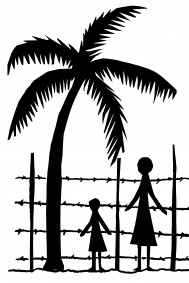

> WW II and the Dutch East Indies / Indonesia
December 7, 1941. Bombs on Pearl Harbor. The Pacific war had begun, and The Netherlands, as the first allied country, declares war on Japan. Already on February 15 1942, ‚Äúinvincible‚ÄĚ Singapore surrenders, and so, on March 8 does the Dutch colonial armyKNIL on Java, the last stronghold. Not long after, almost all of the Netherlands East Indies is occupied by the Imperial Japanese armed forces.
The ensuing period ultimately leads to the departure of The Netherlands and the Dutch people from their colony, and the end game in the struggle for an independent Indonesia. But before that conclusion, many Dutch face very difficult times.
Shortly after occupation, all Europeans and many of the Europeans with mixed ancestry as well, are interned in fenced-off parts of the cities, or transported to factory premises, schools, monasteries, godowns or to remote areas of the country.
Among the civilians, men are separated from women and children, with the age limit for being considered a man progressively moving down until even 10-year old boys are taken from their mothers and moved to separate camps for men.
Shortly after WW-II, in the period 1945-1949, some 300,000 Dutchmen came to the Netherlands from what was then called Netherlands East Indies, and now comprises Indonesia. These are survivors from 530 camps, plus those Dutch nationals with mixed ancestry, who had remained outside the camps. Among those evacuees 42,000 came from POW camps, and 100,000 from civilian camps. Sixty-five thousand to 70,000 of the civilians were women and children. Most of those who were children at the time may still be alive in the early 21st century.
This web site and the film deal with that difficult period in which the many Dutch mothers and their children completely lost control over their lives.

